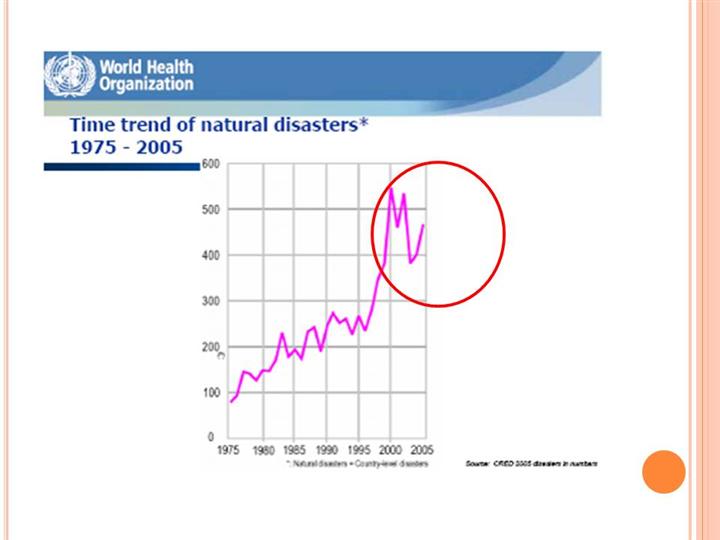| front |1 |2 |3 |4 |5 |6 |7 |8 |9 |10 |11 |12 |13 |14 |15 |16 |17 |18 |19 |20 |21 |22 |23 |24 |25 |26 |27 |28 |29 |30 |31 |32 |33 |34 |35 |36 |37 |38 |39 |40 |41 |42 |43 |44 |45 |46 |47 |48 |49 |50 |51 |52 |53| review |
 |
La Porte: www.bibalex.org/Supercourse/SupercoursePPT/21011-22001/21601.ppt This slide indicates that there has been almost a doubling in the rates of natural disasters. This could be due to: improved reporting, and/or the major increase in populations living in dangerous areas. This alerting trend mandates increase in level of preparedness among health care workers. Nurses are in frontline and are trained to provide emergency direct care to individuals under normal conditions. Disasters result in massive causalities and responsiveness can be often challenging. Under such critical circumstances nurses can be more effective when receive adequate training in preparedness and responding to disasters.
|